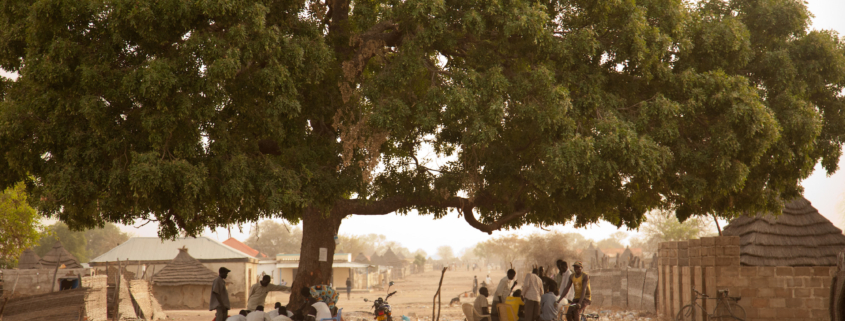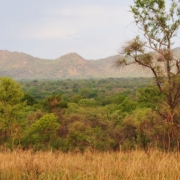Despite the signing of the revitalized peace agreement in 2018, violence continues to impact communities across South Sudan. Almost 4 million South Sudanese are displaced, including 1.7 million internally displaced people and 2.3 million refugees abroad, with women and children disproportionately affected. In the face of these challenges, however, communities across the country continue to draw on both established and new strategies to face the impacts of fragility, conflict, and violence (FCV). These strategies offer important insights for how the World Bank and other development actors can best support those in conflict-affected communities.
The World Bank Group Strategy for Fragility, Conflict, and Violence 2020-2025 identifies resilience as crucial to preventing conflict and promoting post-conflict recovery. Using a conflict-sensitive approach to resilience focused programming in FCV contexts increases the chance of doing ‘more good’ and reduces the risk of ‘doing harm’. However, supporting resilience through development interventions is not straightforward. Adding or integrating resilience-focused interventions within existing programmatic frameworks, donor priorities, and implementation modalities can be challenging, especially in contexts like South Sudan, where simplicity in development interventions is crucial to operational effectiveness. Below are some key takeaways gathered from a recent workshop that focused on resilience in South Sudan, co-convened in Juba by the World Bank and Conflict Sensitivity Resource Facility (CSRF).
Identifying practical ways to carry out resilience-focused interventions requires appreciating the multiple meanings and manifestations that resilience can take on. Specifically:
- Communities respond to and deal with shocks in different ways. Understanding the difference between resilience and coping mechanisms is key in identifying how development partners and other aid actors can foster resilience within shock-affected communities. Resilience can be viewed as responses, norms, or ways of being on which societies consciously or subconsciously depend to sustain themselves, particularly during turbulent times. In other words, it is the ability to absorb shocks, bounce back, and emerge stronger. Resilience differs from coping mechanisms, which households use to weather periods of instability, but which can deplete, rather than sustain, the ability of communities to address FCV over the longer-term. For instance, if well-managed and regulated through inter-community structures and agreements – often a big ‘if’ –, the migration of livestock can help sustain livelihoods during the dry season. Selling or consuming assets like cattle, by contrast, is a coping mechanism that can help people survive one acute period of food insecurity but leave them ill-prepared to survive the next one. Similarly, planting of drought resistant crops, such as sesame, sorghum and millet, is also a source of resilience that can help farmers withstand dry conditions, whereas consuming seeds during periods of hunger is a coping mechanism that would reduce the next harvest and exacerbate future food insecurity risks.
- Given the unique circumstances individuals face – from socio-economic backgrounds, to gender, to social networks, and geographical location – resilience can take on multiple meanings. Indeed, the meaning of resilience can differ to across individuals, households, and their community. In the case of South Sudan, resilience of individuals and communities are strongly intertwined through social networks and obligations of mutual support. For example, communities commonly support individuals who lost assets during conflict. However, if the whole community has been stripped of its resources, individuals are unlikely to receive communal support. Understanding the varied forms that resilience takes can help development partners and aid actors tailor their interventions to better support resilience at different levels of society.
- Resilience is not always positive. Power dynamics, social relations, kinship ties, economic standing, and political affiliations can all impact the resilience of individuals, households, and communities. This means that, in some cases, groups may seek to bolster their own resilience by weakening the resilience of others, such as by deepening inequities to cement their own power or by asset stripping during conflict. Exclusive forms of resilience that come at the expense of other groups stand in direct contrast to more inclusive forms that do not discriminate based on gender, ethnicity, political affiliation, or economic capabilities. The effects of climate change compound these dynamics. For development partners and aid actors, the key is to identify and reinforce sources of resilience that are available to, and can foster cohesion among, a wide swath of different communities. Skills development programs and savings groups offer useful examples.
Contributing to resilience in South Sudan is an iterative process, one based on listening to, and learning from, myriad perspectives across society on what contributes to or undermines people’s resilience. International agencies and their international staff need to be humble and committed to learning from their South Sudanese colleagues, national NGOs, and communities. Supporting resilience requires engaging with communities iteratively over time and building trust across the project cycle.
Having looked at how to better understand resilience, in our next blog, we will explore programmatic approaches that will help teams foster resilience on the ground.




